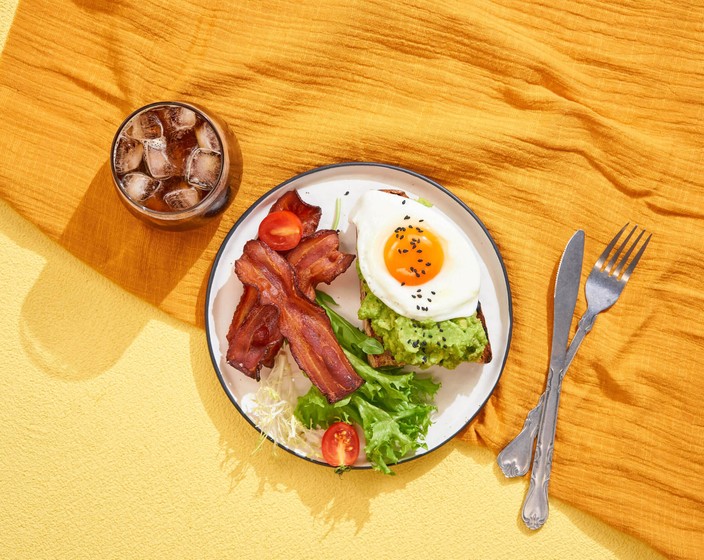How to Fry an Egg Perfectly in 5 Different Ways




Fried eggs are the number one go-to breakfast food worldwide; it’s quick and easy to fry an egg, a few strips of bacon when you don’t want to think of any complex breakfast ideas.
And there is an impressive list of dishes that you can elevate by adding a fried egg. Just think of how much flavor a perfectly fried egg can egg to a burger, a breakfast sandwich, a potato hash fry up, topping a fried rice dish, or good old cheesy grits.
Fried eggs are delicious and ubiquitous and anything but boring. There are at least five different ways to fry an egg! How do you like your fried eggs? And how do you make a perfect fried egg every time? Let’s break it down.
Nothing works better than a good nonstick frying pan. It is perfect for any type of fried eggs you prefer and guarantees effortless execution and seamless slide-off every single time. You don’t even need to invest in anything too fancy; any nonstick works just fine.
If you have a well-seasoned cast iron skillet, you can use it to fry eggs as well. But make sure to add the extra fat it needs to avoid sticking and eventually scraping off the burned eggs off it. Mastering the flip also comes with an additional challenge.
If you happen to have every chef’s favorite carbon steel pan, you can use it to fry eggs as well.
When it comes to the type of fat you choose for frying eggs, it mostly depends on your taste preference. Here’s what you should know about the most popular options:
Frying eggs in butter is the most classic choice. It adds a nice buttery and nutty flavor to the eggs. It also gives you more control over the doneness of your egg as it is perfect for cooking at lower temperatures.
If you are making bacon and eggs for breakfast, fry the bacon first and then fry the eggs in bacon fat. Bacon grease adds to the flavor of the fried eggs and takes them to a whole new level of deliciousness.
Canola oil or any type of vegetable oil are also popular choices for frying eggs. Those oils have neutral flavor profiles and high smoke points, so you can crack up the temperature to medium-high without worrying.
If you want to fancy it up a bit, you can use flavored oils for cooking. Cooking oils can be infused with many herbs like rosemary, basil, cilantro or more potent ingredients like garlic or chili.
Olive oil is another good choice for lower-temperature cooking. It will add a pleasant flavor to your fried eggs and give those delicious crunchy edges to egg whites.
Nothing beats the classic salt and pepper combination when it comes to seasoning fried eggs. You can experiment with other spices and herbs. Try paprika, garlic or onion powder, chili flakes, or any of your favorite dry herbs. But salt is a must.
There are two ways to crack an egg - the right way and the wrong way.

The right way to crack an egg is to crack it on a flat surface like a kitchen countertop. This way, the egg membrane (that transparent film lining the eggshells on the inside) stays intact, and you don’t have to fish out fragmented eggshells out later. Cracking the eggs on a flat surface also prevents any food contamination.
The wrong way to crack an egg is by hitting it multiple times on a sharp edge of a bowl or using a knife. Eggshell fragments are more likely to make it into a bowl or a frying pan together with your eggs.
Now that we got through all the basics, make the eggs the way you like them following these simple steps.

*No matter what type of fried egg you prefer, always make sure your eggs are at room temperature before you cook them. If you use cold eggs straight out of the fridge, you are more likely to overcook them.

Step 1. Melt the butter or heat up the oil in a nonstick skillet.
Step 2. Crack the eggs directly into the skillet.
Step 3. Season the eggs with salt (and pepper if you’d like).
Step 4. Cook for 2 to 3 minutes until the egg white is set and the yolk is still runny.
Repeat steps 1 through 3
Step 4. Cook for 2 minutes until the egg white is set.
Step 5. Flip the eggs and cook for 30 more seconds, until the white is only slightly set and the yolk is still runny.
Repeat steps 1 through 4
Step 5. Flip the eggs and cook for 1 more minute, until the white is thoroughly cooked and the yolk is slightly set.
Repeat steps 1 through 4
Step 5. Flip the eggs and cook for 2 to 3 more minutes, until both egg white and egg
yolk are completely set.
A basted egg is and fried egg with a slightly set egg white and yolk on top. The thin cooked layer is achieved using steam, so you don’t have to flip the egg.
Repeat steps 1 through 3
Step 4. Cook for 30 seconds until the egg white is slightly set.
Step 5. Add 1 tbsp. of water to the pan and cover it with the lid.
Step 6. Baste the eggs for 2 minutes until the top of the eggs develops a thin white film.
And there you have it; now you can fry your eggs perfectly just the way you like them.